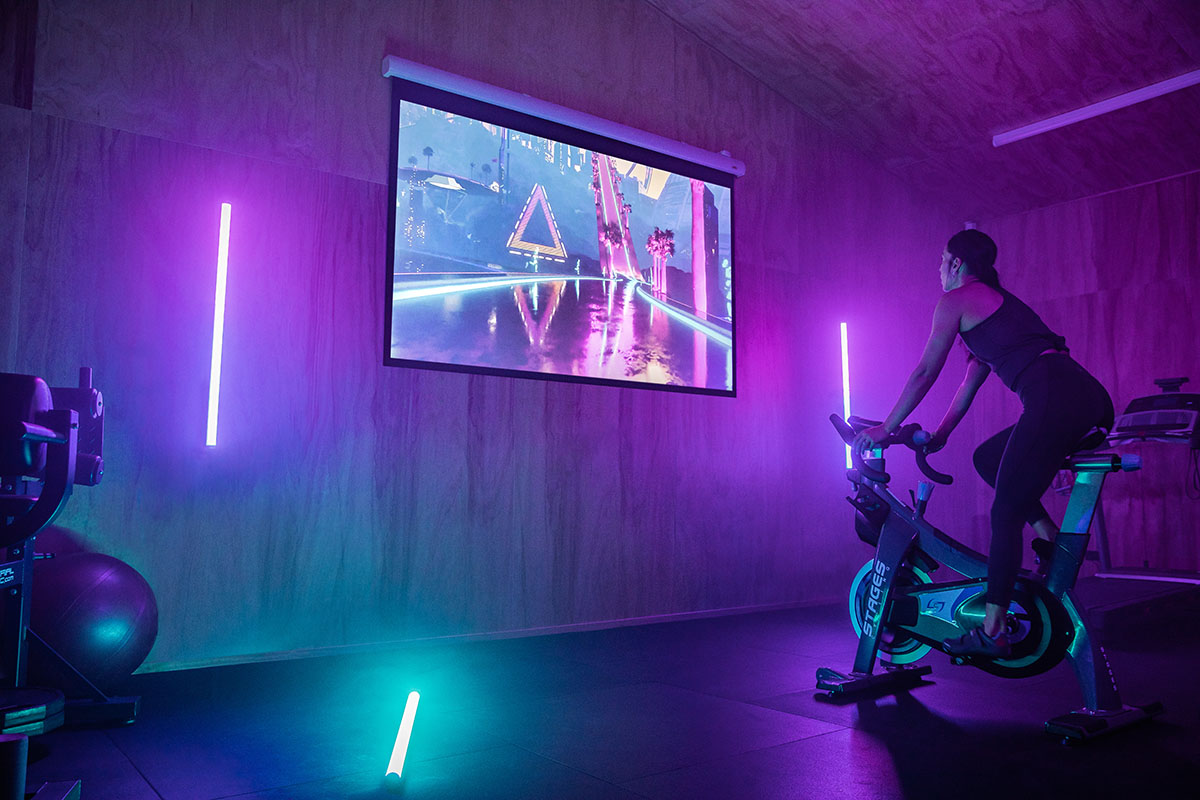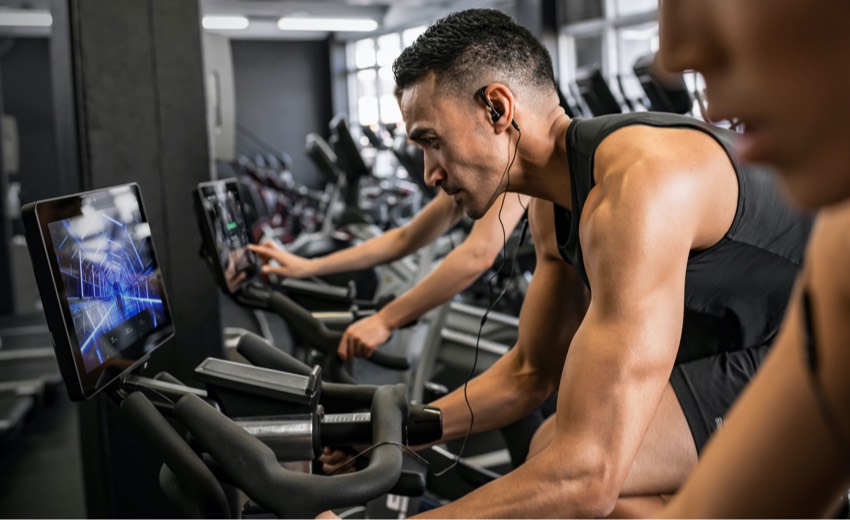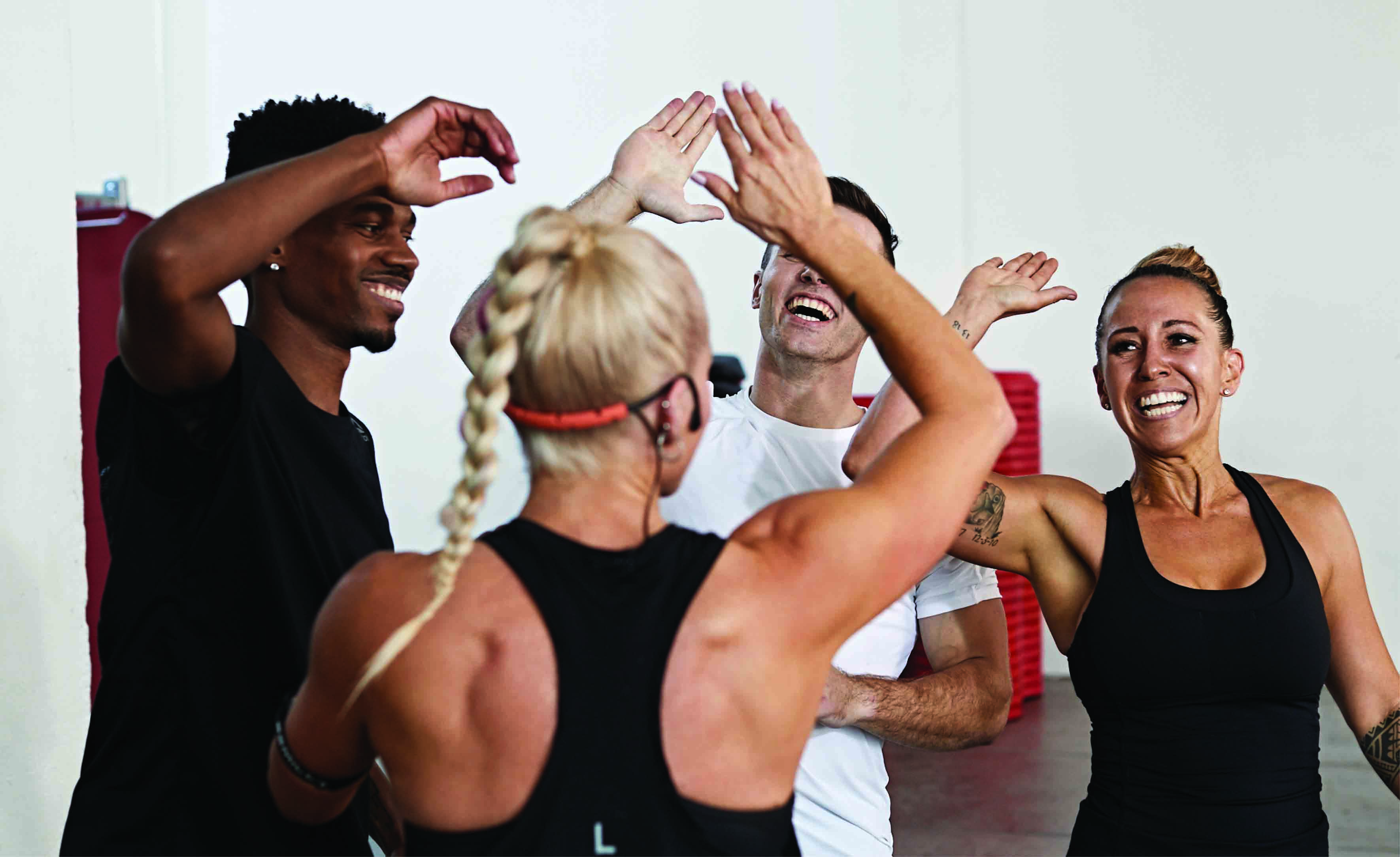
Club operators beware, Apple has just issued one of the clearest signals yet that it intends to conquer the fitness market.
The world’s most valuable company has announced that Apple Fitness+ will soon be available via iPhone without users needing to purchase an Apple Watch.
With an estimated 1.2 billion active iPhone users in the world, this gives Apple unprecedented scale and reach to grow its fitness subscriber base. To put it into context, that potential audience is 73 times larger than the total membership of the world’s biggest gym chain, Planet Fitness (16.5 million members as of August 2022).
What’s more, the company will offer discounts to the fitness app by allowing users to bundle it with other popular services like Apple Music and Apple TV+ for “one low monthly payment”.
This marks yet another major challenge clubs must compete with for consumers’ attention. Whether it’s a Peloton bike in the garage, Apple Fitness+ on their smartphone, or Youtube workouts on their TV, people have more home exercise options than ever before. And with 85% of all gym members also working out at home, clubs can ill afford to stay out of this space and leave their members at the mercy of tech giants.
“The speed at which fitness operators adopt and leverage technology will have a material impact on their future success,” noted a recent International Fitness Industry Trend Report from ClubIntel. “As fitness moves from a brick and mortar experience to a digital one, operators will need to pursue these platforms more assertively to remain relevant.”
The report examined the impact on clubs of ‘Digital Darwinism’ – the term coined to describe the current zeitgeist where technology and society are evolving faster than businesses can naturally adapt – warning that clubs who fail to keep pace will be at risk of extinction.
Times have never been tougher for clubs, but it isn’t all doom and gloom. The evidence suggests operators that can bridge the gap between at-home and in-club to offer members an integrated fitness experience will be best-placed to thrive.
For those willing to be bold, now is the perfect time to transform your member offering and future-proof your business. Here are 8 key plays to fight back against Big Tech and give your club the edge.
1. EMBRACING OMNIFITNESS
Clubs may not have the financial might or brand power of major tech firms, but they have assets that Big Tech can’t yet match: highly-engaged communities centered around authentic, human connection and live experiences.
Digital is now undoubtedly a key pillar of club success, but it’s the combination of this with live workout experiences that gives clubs the edge over digital-only fitness products.
The crucial part is serving up high-quality digital fitness content and livestream classes that are motivating, fun, and results-driven. After all, average fitness content is available for free all over Youtube, so your club’s offering needs to be world-class to keep the audience coming back and paying.
“The reality for most clubs,” says Les Mills Global Markets CEO Keith Burnet, “is that it’s going to be very difficult to beat the world’s best boutique experience, or create a tech product to rival Apple. But offering an Omnifitness experience that combines the best of both worlds is now a viable goal to aim for.
“Much like supermarkets, consumers want a one-stop-shop for their fitness needs, so clubs can stand out by combining the motivation and social connection of live fitness experiences in-club, with the convenience of digital workouts at-home. Providing a connected fitness solution that neither Apple nor the best boutiques can match puts your club in a strong position to keep current members – and attract new ones – by supporting them to work out however they choose.”

2. REIMAGINING THE MEMBER JOURNEY
Driving member footfall by offering a great member experience is the classic club blueprint, but clubs can still deliver great experiences – and increase member loyalty – by reaching beyond the four walls of the facility.
Although the club recovery is gathering pace and people are relishing being back in their facilities, digital workouts aren’t going anywhere, with 80 percent of gym members planning to continue using them post-pandemic.
This means Omnifitness – a blend of in-gym and at-home digital workouts – is becoming a basic expectation, with the majority of exercisers (59%) saying they now favor a 60:40 split between gym and home workouts.
For operators, this necessitates a total reimagination of the member journey and how we measure engagement. Instead of simply tracking club attendances, we need to pan out and look holistically at all the touchpoints a member has with their facility – including home workouts via your club’s digital offering, and even use of the club app – to accurately assess member engagement and take actions to enhance this.
“One of the most important strategies that health, fitness, and wellness clubs need to employ is to expand their reach beyond the traditional bricks and mortar to provide members with a total wellness solution,” says Kevin McHugh, COO of The Atlantic Club in New Jersey, US.
“The leading health and fitness clubs of the future will provide a full omnichannel solution to members.”
3. LEVERAGE DIGITAL TO DRIVE REACH
The abiding legacy of the pandemic will no doubt be the explosion of digital fitness options and their increasing adoption by consumers. This has brought intense competition from the likes of Apple and Peloton, but it also brings a golden opportunity for clubs to expand their reach and drive member growth by diversifying their offering.
High-class digital solutions can help clubs win new fans online, build brand affinity, and then eventually convert them to becoming full members of the club. Consider how your digital presence can drive new leads and prospects by bringing your authentic club experience into the home to reach groups who wouldn’t typically visit your club.
“We’re committed to creating a high-quality digital offering for our members because we can’t afford not to,” says Henry Vazquez, Creative Services Director at Greater Philadelphia YMCA, which is doubling down on its digital platform to reach wider into the community.
“What we’re seeing now in the club industry is reminiscent of what’s happened in the television industry over the past decade, as powerful digital players have come to the fore."

4. JOIN THE DOTS
When it comes to shaping your club’s digital offering, the first question to consider is: Does your digital user experience match the standards you set when people visit your club?
A common stumbling block comes when clubs create digital solutions that are completely disparate from their live in-club offerings. It’s no good enticing members and prospects online with a bunch of off-the-shelf on-demand and livestream classes that they can’t do in your club.
Using digital to complement your in-club offering through a connected member experience is key. Are you offering digital versions of the workouts members love doing in your club? And conversely, are you offering better live versions of the workouts featured on your digital channels, so that users are enticed to come to the club more for the full experience?
By taking that authentic club experience into homes, operators can reach huge swathes of the population, helping untapped audiences to build their fitness skills and confidence at home, before graduating into your facility.
5. BROADEN YOUR CLUB’S APPEAL
An unexpected upshot of the pandemic has been clubs’ ability to innovate and keep pace with shifting consumer preferences. Those who adapted have added several new strings to their bow and are in a stronger position to appeal to broader audiences.
Whether it’s been offering digital workouts via their club app to support home workouts, incorporating outdoor workouts into the timetable, or adding Video On Demand (VOD) to the studio to provide more off-peak classes for those with flexible working hours, many clubs can now expand their membership by catering to a wider range of tastes.
“We’re coming off the back of the biggest pandemic in a century and health is now everyone’s top priority, so I think there are huge opportunities for clubs to play a more prominent role in getting people healthy and fit,” says Eddie Tock, CEO of REX Roundtables, which works with 2,700 of the world’s leading clubs to grow their membership.
“The key will be to make club activities more accessible, by offering more outdoor and digital workouts, as well as acknowledging that people will want to work out in lots of different ways. This can help us to engage the other 80 percent of the population and go fully mainstream.”
6. EMPHASIZE YOUR EDGE
The pandemic has brought great progress in the range of options for people to stay active at home, but motivation remains the key to regular exercise and this is the very reason clubs exist in the first place. Gym members are on average 14 times more active than non-members because live workouts in a buzzing club provide the ultimate inspirational fitness experience and the numbers bear this out.
A 2022 pilot study presented at the American College of Sports Medicine (ACSM) Conference showed taking a live class in a club brings better results and more enjoyment than doing the same workout digitally at home.
Participants’ average heart rate was 14 percent higher during the gym class compared to the livestream and VOD sessions, despite being the exact same class format and release. As well as motivating them to work harder, the in-club workout was rated by participants as being 13 percent more enjoyable and 14 percent more satisfying than the two digital workouts.
“What our findings show is that we really are social animals when it comes to working out,” says Les Mills Head of Research Bryce Hastings. “Maximizing the group effect leads to a high level of what we’ve termed ‘groupness’. And the higher the level of groupness, the more we see increases in a person’s enjoyment, satisfaction and exertion.”
In other words, the motivation and connection of a live class makes people work harder, have more fun, and want to come back to their club more frequently.

7. SUPERCHARGE THE SOCIAL EXPERIENCE
Appetite for live fitness experiences is soaring, with the 2022 IHRSA Global Report finding a growing number of club operators passing pre-pandemic membership levels.
This chimes with the 2021 Global Fitness Report, which states two-thirds of gym members (67%) now prefer working out in groups, while live classes in club are nearly twice as popular as doing livestream classes at home (favored by 44% of members vs 23%).
Across clubs that have made strong recoveries and are standing firm in the face of digital competitors, dialing up the social experience has been key to re-engaging members and delivering the results that keep them coming back.
“We’ve seen a massive rush from members eager to get back into the club and we’re pretty much back to pre-COVID attendance levels,” says Ant Martland, Co-Founder and Marketing Director of fast-growing UAE chain GymNation.
“Group fitness and the power of our club communities have really shone through and we think this will be a key component in the wider industry’s recovery. People are desperate to get back to working out in groups and the past few months have been the best new sales period we’ve ever had.”
8. CELEBRATE YOUR STARS
With strong consumer demand for social connection, it’s inevitable that the people working in clubs will have a vital role to play in keeping them competitive.
Rockstar Instructors are identified as the single most important factor for gymgoers when choosing a live class, favored by 28%, ahead of the quality of music (24%) and type of class (21%). Quality Instructors are key to meeting consumer demand for added motivation and deeper connection in their workouts – something digital offerings struggle to replicate.
And having great people is particularly important for winning new members. 30% of club prospects say “a good atmosphere” is a key factor in choosing a gym to join, while 59% say staff are also a consideration.
“In the clubs I’ve managed over the years, group exercise has been the number one driver of membership sales and a fantastic way to forge connections among your current members,” adds Herb Lipsman.
“Not only that, but it’s a great way to drive member referrals, particularly via social media. Let’s face it, people don’t go on Facebook or Instagram to talk about their favorite treadmill or resistance machine, they go on there to rave about the killer class they’ve just done with an awesome Instructor and to share their sweaty victory selfie.”
GIVE YOUR CLUB THE EDGE
As the world’s first Omnifitness app, LES MILLS+ bridges the gap between digital and live workouts by signposting users towards your club.
FIND OUT MORE


